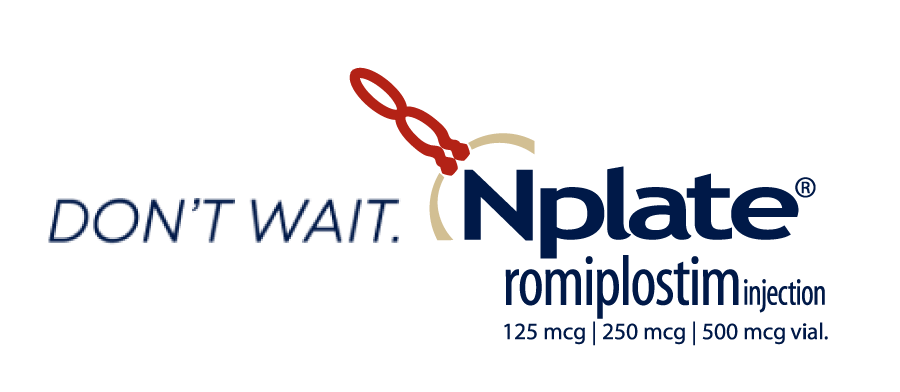References: 1. Nplate®
(romiplostim) prescribing information, Amgen. 2.
Promacta® (eltrombopag) full Prescribing Information, Novartis. 3. Doptelet® (avatrombopag) full Prescribing Information,
Sobi. 4. Tavalisse®
(fostamatinib disodium hexahydrate) full Prescribing Information, Rigel. 5. Kuter DJ, Bussel JB, Newland A, et al. Long-term treatment with
romiplostim in patients with chronic immune thrombocytopenia: safety and
efficacy. Br J Haematol. 2013;161(3):411-423. 6. Data
on file, Amgen; Clinical Study Report 20080435; 2014.
7. Gilani B, Cassagnol M. Biochemistry, Cytochrome P450. In: StatPearls [Internet]. Treasure Island (FL):
StatPearls Publishing; January 2024. https://www.ncbi.nlm.nih.gov/books/NBK557698/.
8. Kuter DJ, Rummel M, Boccia R, et al. Romiplostim or standard of care in patients with immune thrombocytopenia. N Engl J Med. 2010;363(20):1889-1899.
9. Rummel M, Boccia R, Macik G, et al. Efficacy and safety of romiplostim versus medical standard of care as chronic therapy for nonsplenectomized patients with immune thrombocytopenia (ITP). Haematologica. 2009;94(suppl 2):424.
10. Data on file, Amgen; Number of patients treated with Nplate® from launch through to June 2023; Updated 2023.


